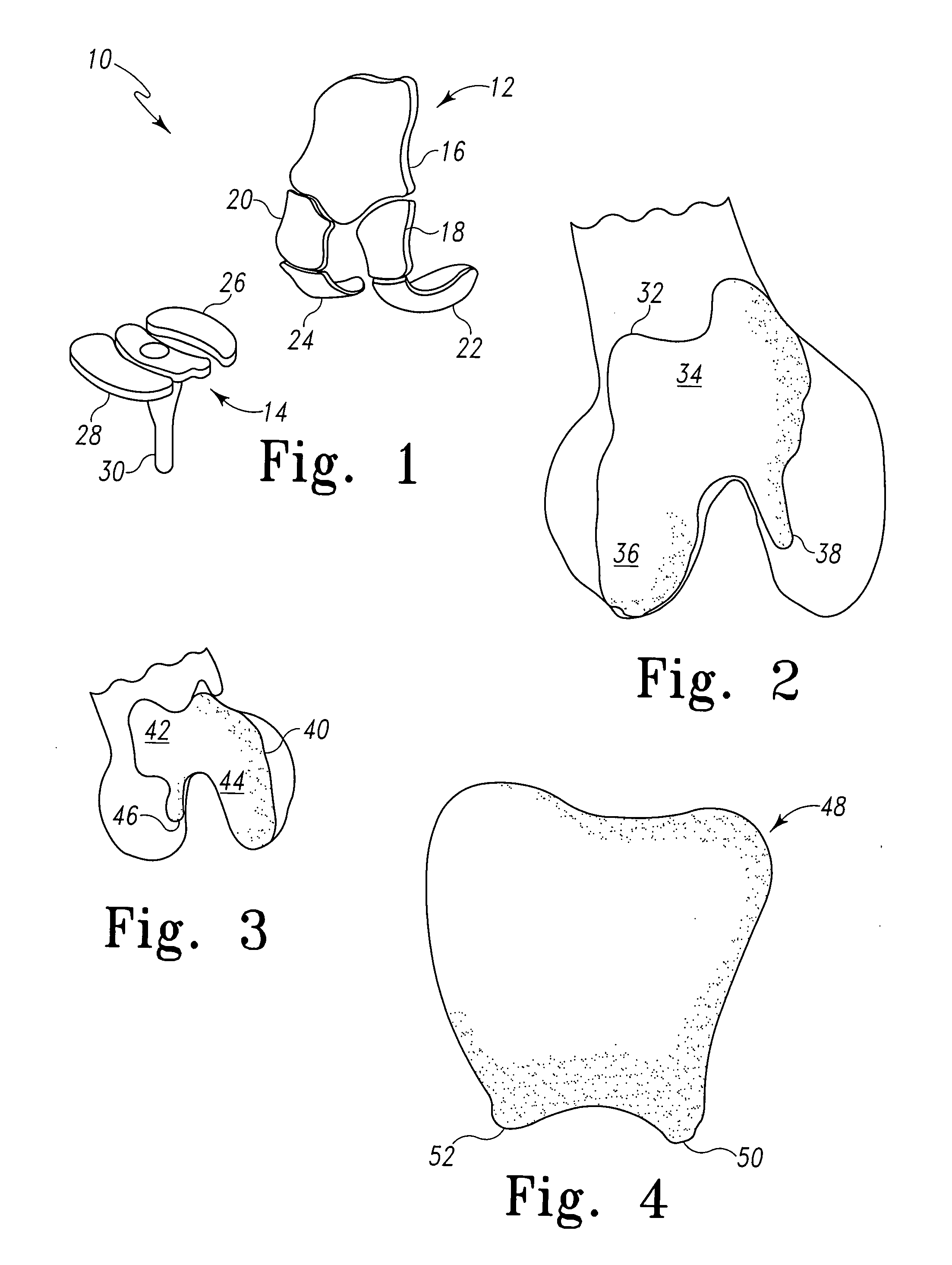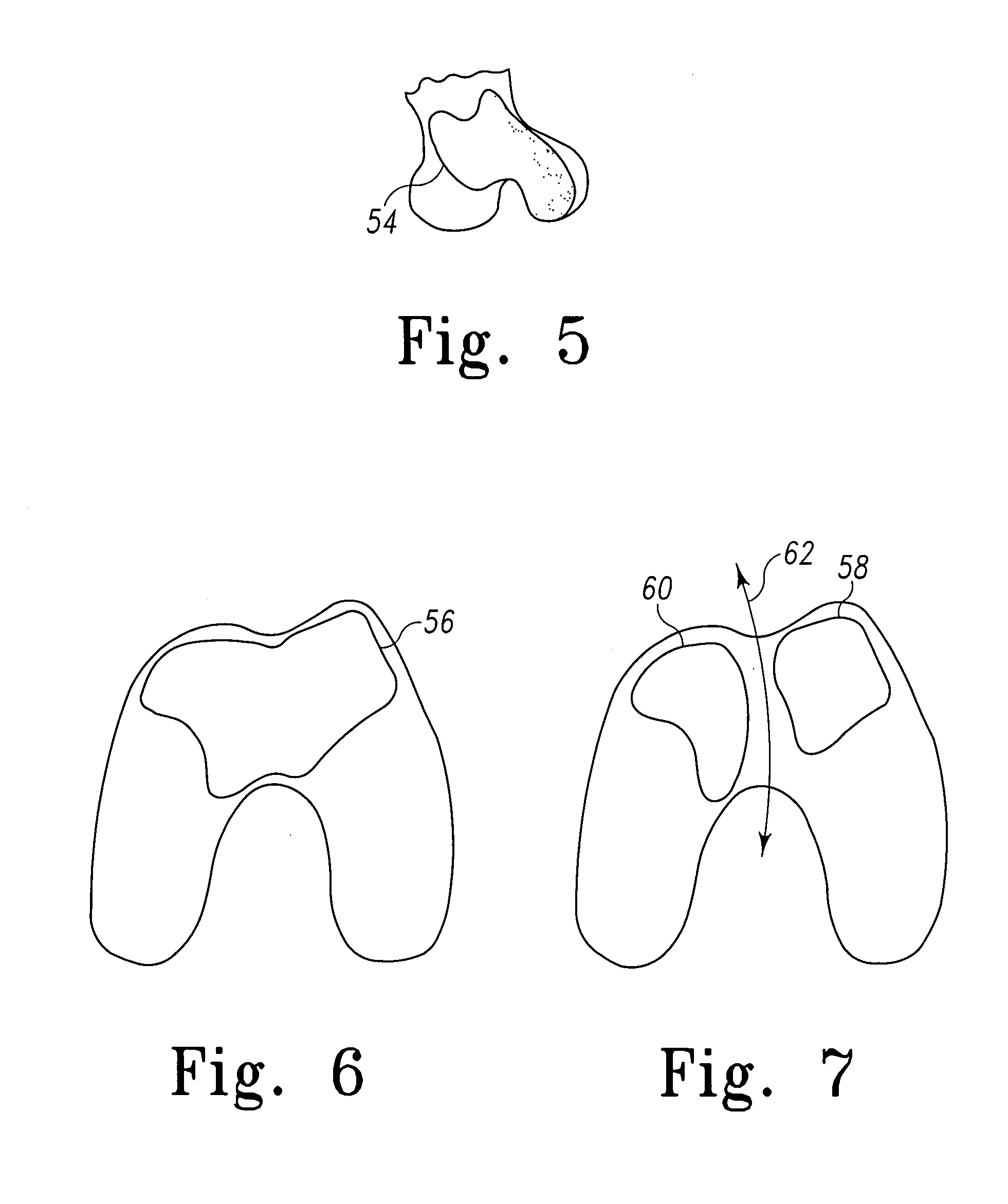Systems and methods for compartmental replacement in a knee
a compartmental replacement and knee technology, applied in the field of human body joints, can solve the problems of substantial trauma, the device of the '855 patent suffers from several limitations, and the bone resection required for mounting the components may require extensive recovery time,
- Summary
- Abstract
- Description
- Claims
- Application Information
AI Technical Summary
Benefits of technology
Problems solved by technology
Method used
Image
Examples
Embodiment Construction
Individual Components
[0115]FIG. 1 shows one embodiment of a system 10 made in accordance with the principles of the present invention. The system 10 is comprised of a femoral replacement 12, a tibial replacement 14, and a patellar replacement (not shown). The femoral replacement 12 includes a patellofemoral joint (PFJ) component 16, an upper lateral condyle component 18, an upper medial condyle component 20, a lateral femoral anterior / posterior condyle component 22, and a medial femoral anterior / posterior condyle component 24. In accordance with one embodiment (not shown) the upper condyle components and femoral anterior / posterior condyle components are provided as a single component. The tibial replacement 14 includes a medial meniscus component 26, a lateral meniscus component 28, and a tibial stem component 30.
[0116]By segmenting the replacements into upper and anterior-posterior medial, and lateral, PFJ, meniscus and tibial stem components, the system 10 of the present invention...
PUM
 Login to View More
Login to View More Abstract
Description
Claims
Application Information
 Login to View More
Login to View More - R&D
- Intellectual Property
- Life Sciences
- Materials
- Tech Scout
- Unparalleled Data Quality
- Higher Quality Content
- 60% Fewer Hallucinations
Browse by: Latest US Patents, China's latest patents, Technical Efficacy Thesaurus, Application Domain, Technology Topic, Popular Technical Reports.
© 2025 PatSnap. All rights reserved.Legal|Privacy policy|Modern Slavery Act Transparency Statement|Sitemap|About US| Contact US: help@patsnap.com



